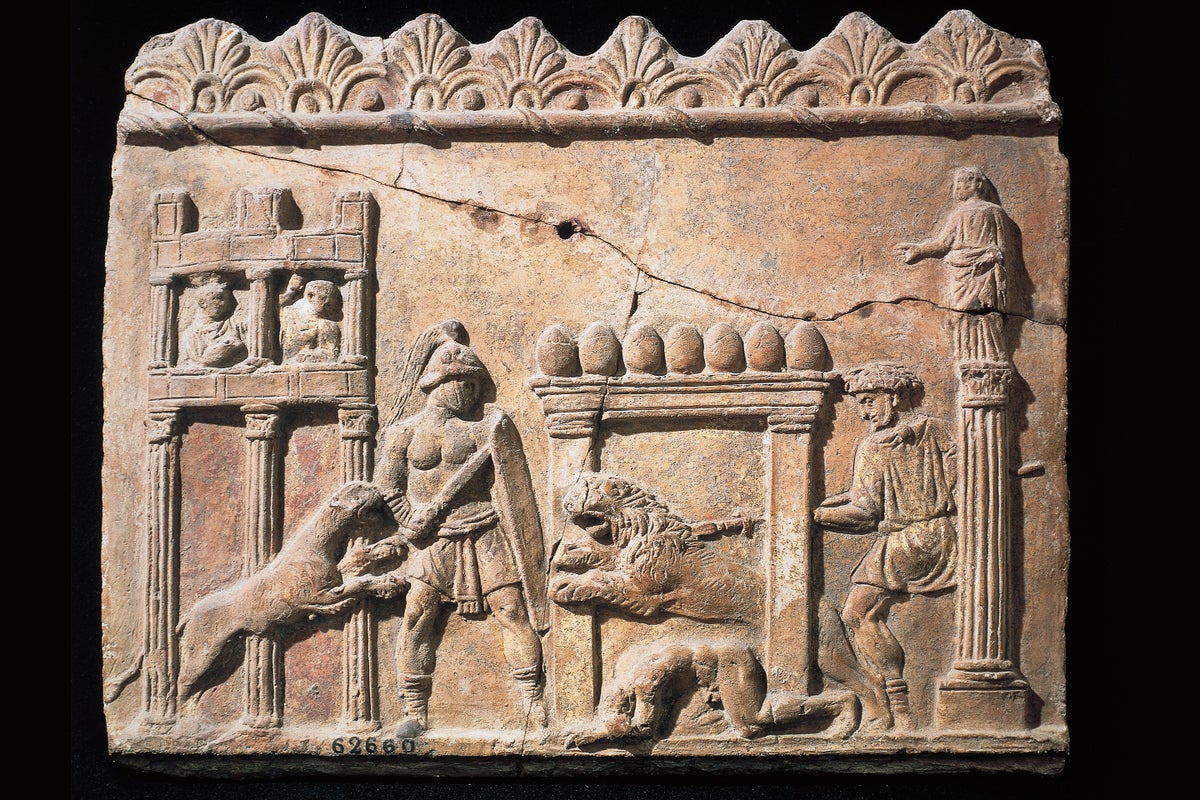Lion Bite to the Butt May Be First Proof of Human-Animal Gladiatorial Combat
The first physical evidence of Roman gladiators fighting animals has been found in skeletal remains from England
1st century AD Roman relief portraying gladiators and lions fighting.
Join Our Community of Science Lovers!
If you’re enjoying this article, consider supporting our award-winning journalism by subscribing. By purchasing a subscription you are helping to ensure the future of impactful stories about the discoveries and ideas shaping our world today.
Lesion on the right ilium of 6DT19.
Lesions on the left iliac spine of 6DT19
They also chemically analyzed the ancient Roman bones to confirm other traits, such as the deceased person’s sex and nutritional condition—clues that could help determine whether this skeleton could truly have come from a Roman Empire–era gladiator. The researchers say they were also able to estimate that the injury’s timing was roughly concurrent with that of the fighter’s death.
Lesion on the left iliac spine of 6DT19.
The new finding not only offers fascinating clues into the culture of gladiatorial combat but also highlights the astonishingly far-reaching influence of the Roman Empire. “This was one of the key ways that Roman culture was spread—a spectacle,” says Anna Osterholtz, a bioarchaeologist at Mississippi State University, who was not involved in the new study. “Because you would also have executions that would be taking place as part of the games, it taught things like social roles and social norms.”
Skeletal remains can reveal a great deal about pieces of human history that would otherwise be lost to time. “Our lives are inscribed into our bones,” Osterholtz says. These remains can tell us about “people’s lives that weren’t considered important enough to be written down, that were never part of the official record.”
Gayoung Lee is Scientific American’s current news intern. A philosopher turned journalist, originally from South Korea, Lee’s interests lie in finding unexpected connections between life and science, particularly in theoretical physics and mathematics. You can read more about her here: https://gayoung-lee.carrd.co
Source: www.scientificamerican.com
